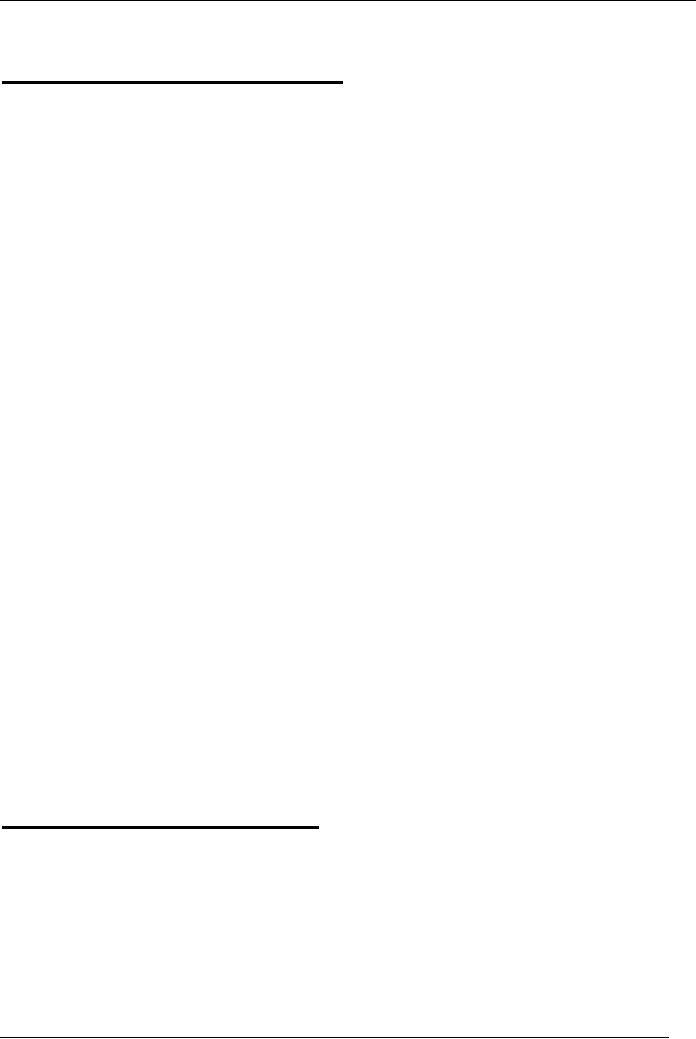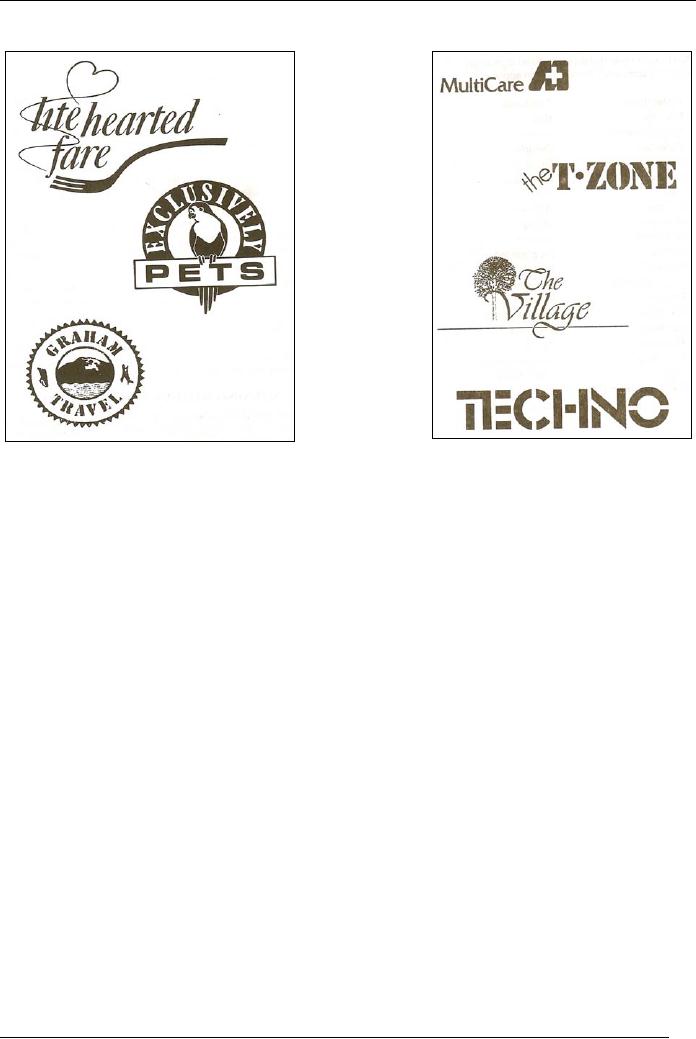 |

Advertising
and Promotion (MKT621)
VU
Lesson
32
CLIENT
AGENCY RELATIONSHIP
OVERVIEW
In
the last lecture essentials
to manage advertising agency
were explained in detail. To
continue
to
explain about the various
aspects of advertising agency
the duty as the owner /
boss of the
advertising
agency will be explained besides
identifying Cardinal Rules
for running an
agency.
There
may be cases where clients
would like to advertise
without an agency in this regard
it
will
be explained as how to do it and what
are its different
implications. Primarily such
an
effort
is always made to reduce the cost of
advertising. Further more
the word about logo
and
corporate
identity its usage,
evaluation and the definition of
corporate identity will also be
discussed.
THE
DUTY OF OWNER / BOSS OF AN ADVERTISING
AGENCY:
Following
are basically the duties of
an owner / boss of an advertising
agency in fact the
boss
should
listen more and say less:
�
Be
fair to staff & be
firm: A boss
should always be ready to make
un-popular decisions
to
create an atmosphere of stability.
�
Maintain
forward thrust of the
agency: He or she
should try to get things done
quickly
win
more business thus
maintaining its growth /
forward thrust.
�
Try
to build agency by getting more
accounts: As is
necessary for different
business
houses
to grow the advertising
agencies boss has to ensure to get
more and more
accounts
for
improving profitability.
�
Win
confidence of clients at highest
level: Unlike
the account executive that
has to keep
contact
with all levels of a client,
the boss should have
direct repo with the
client's top
executive.
�
Try
to make sufficient
profits: The
profitability means more
benefits for the
employees
thus
creating confidence and job
security.
�
Plan
policies far into the future
are good enough to succeed
them: The
future growth
plan
of the agency provides
future vision of the company
and the growth pattern
shows
the
futuristic trends and the
growth path for the
employees.
�
Try
to recruit highest quality of
people: The
selection of high quality of people
will
always
produce the best and
productive results thereby
attracting more
clients.
�
Try
to get the best out of every
staff: How to get
the best out of every
staff is what
should
be identified and implemented. In fact
the old philosophy of right
person for the
right
job can always help in this
context.
CARDINAL
RULES FOR RUNNING AN
AGENCY:
Running
an agency means focused
effort and to face eventualities. In this
the following
Cardinal
Rules for running an agency
are identified and explain
below:
�
Affection
to henchmen: Basically
the people who are running
the agency should
ensure
that
their creative team is give due
regards and affection.
�
Tolerance
to their shortcomings: It is also essential
that the managers running
the
advertising
agency should show tolerance
to the shortcomings of their
employees.
�
An
unerring eye for main
chance: Moreover
the owner / boss should
have the ability
and
capability to grab the opportunity once
it is offered to you.
�
Morality
of people working in agency:
The
people who are working in
the agency have
to
be very credible so that it
does not reflect in any
way on the company.
94

Advertising
and Promotion (MKT621)
VU
Head
of the agency should know
how to delegate powers and
work in the pursuit of
excellence
but
more satisfying in the
pursuit of beginners.
ADVERTISING
WITHOUT AN AGENCY:
For
whatever reason, you decide
not to use an agency for
your advertisement program;
the most
important
role is to give creative &
strategic direction to your
advertising program.
The
question
is HOW TO DO IT?
To
Keep Advertising Program on
Track:
As
you will be working without an
advertising agency you have
to ensure to devise a program
and
implement it by keeping it on tract
such as written
below:
1.
Do it yourself.
2.
Stay focused on your
positioning.
3.
Have a written
strategy.
4.
Adopt brainstorming
strategy.
5.
Let someone else handle
day to day
advertising.
6.
Hire freelancers.
a.
Copywriter.
b.
Graphic
Designer.
c.
Desk
top publisher.
d.
Photographer.
e.
Other
Specialists.
7.
Take care about copyrights:
As the world is growing
there are stringent
regulations of
copyrights
act. So the copyrights
should be taken into
consideration before using
idea etc.
8.
Taming media reps.
a.
Media
plan & budget for
campaigns.
b.
Copywriting
& ad production skills.
c.
Audience
surveys.
9.
Trade directories.
Effective
Use of Money Saving
Resources:
While
doing your own publicity and
effort to save money and yet
remain effective
following
inexpensive
methods are
explained.
Co-Op:
In
this case generally the
sharing of the media cost can be done
with other
advertisers
such
as combined advertising effort or
various similar
products.
Trade
outs: Another
effective and money saving
method of advertising is trade outs in
which
advertising
is done in exchange of the products of
the companies desiring to advertise
them.
Free
Expertise: You can also
use the free expertise by
attending seminars and talking to
government
agencies and delegates of chamber of
commerce's.
LOGO
AND CORPORATE IDENTITY:
Almost
all businesses have a logo,
logotype or both for
distinct identity. A Logo is
generally a
symbol
which identifies your
company, while the logo
type is the distinctive way
of presenting
the
company name.
What
makes a good Logo
Design?
A
logo is a symbol it stands
for your company but it
need not and should not be a
picture of
everything
you do. The ideal
logo gives in a single
glance a sense of your
positioning. The
good
logo design should have
following components:
a.
Focus
on one image & one concept.
b.
Should
evoke a feeling or create an image of
the business or
event.
95

Advertising
and Promotion (MKT621)
VU
Following
are few illustrations of
logos for
you
to understand the importance of
logos:
The
illustrations given above
are
regarding
logo types.
Logos
or Logotype
Whether
you use a logo, logotype or
combination of both you want
to ensure that logos or
logotypes
should:
a)
Convey instantly a feeling
about your company.
b)
Be distinctively recognizable as
yours.
c)
Be versatile enough to be used in
every application.
DEVELOPING
A NEW LOGO:
In
order to develop a new logo
or modify an existing one there
are various questions
which
need
to be answered before doing
so.
1.
What is the single thing I
most want my logo to convey
about my company?
2.
Are their any particular
colors I feel drawn to using
in my logo? If so, what
colors?
3.
What do these colors say
about my business, and do they enhance
the concepts out of
above?
4.
If I want my logo to contain a
pictorial image of my company?
EVALUATING
PRESENT LOGO:
In
order to evaluate the present
logo besides answering the
questions written above
following
positive
and negative concepts expressed with
regard to the logo have to be
evaluated.
Positive
Concepts Expressed:
Professional Friendly Bold
Expensive Exciting
Caring
Creative Powerful Fast
Intelligent For adults
Loving Loving Spiritual
Trendy
Affordable.
Negative
Concepts Expressed: Sloppy
Unfriendly Cheap
Confused Vague
Dishonest
Boring Aggressive.
96

Advertising
and Promotion (MKT621)
VU
In
the above perspective of evaluating of
present logo to make up ones
mind it will be helpful if
the
following appraisal questionnaire is
filled which will help in
taking and appropriate
decision.
What
is the single thing I least
like about my present
logo?
Should
I keep using my old
logo-
Yes
No
Should
I use a modified
version-
Yes
No
Should
I do a new design -
Yes
No
Why:
__________________________________________________________
DEFINING
YOUR CORPORATE IDENTITY:
In
the world of design and advertising
corporate identity refers to
your logo and all
related
items
identifying your company
such as Letter Heads,
Business
Cards,
Vehicles and
Store
Signs
etc.
Corporate
identity is not advertising
yet as it is a highly visible expression
of your positioning,
it
greatly affects the impact
of your advertising.
A
corporate identity program is a
set of standards established to govern
the look of all
identity
items
and such identity programs
covers, logo design, colors,
typefaces, placement of
graphics
and
size relationships between your
logo and other graphic or
copy elements.
Having
a corporate identity program and
spelling out your standards
determines the way
you
want
to identify your product or
company.
97
Table of Contents:
- INTRODUCTION TO ADVERTISING:Its growing importance, Explanation of Personal and non-personal selling
- INTRODUCTION TO ADVERTISING:ADVANTAGES, Communication, Information, Various Media
- INTRODUCTION TO ADVERTISING:FUNCTIONS OF ADVERTISING, IMPACT OF ADVERTISING
- ADVERTISING AND SOCIETY:PRACTICAL BENEFITS, ETHICS IN ADVERTISING, Marketplace & Market space
- MARKETING TOOLS:COMPONENTS OF MARKETING MIX, PRODUCT LIFE CYCLE (PLC) CURVE
- MARKETING TOOLS:SWOT Analysis, Contents & Structure, ROLE & FUNCTION OF ADVERTISING
- ROLE AND FUNCTIONS OF ADVERTISING:Structure of an Advertising Agency, How to Select an Advertising Agency
- ADVERTISING PLANNING:ADVERTISING OBJECTIVES, Types of Advertising, Positioning Strategies
- POSITIONING:BRANDING, 7 Steps of Creative Process, UNIVERSAL ADVERTISING STANDARDS
- ADVERTISING MESSAGE:Message Content, BASIC TERMS & CONCEPTS
- ADVERTISING BUDGET:4 Methods to determine, ADVERTISING RESEARCH, ADVERTISING RESEARCH
- ADVERTISING REACH:BROAD COMMUNICATION OBJECTIVES, ADVERTISING COPY METHODS, MEDIA RESEARCH
- PRE – PLACEMENT EVALUATION:ACCOUNT PLANNING, MARKET, COMPETITION
- WORKING OF ADVERTISING:12 Steps to develop effective campaign, SOURCE or THE ADVERTISER
- ADVERTISING RESPONSE HIERARCHY MODELS:AIDA MODEL, PROCESS REQUIRED TO GET BIG IDEA
- PROBLEM SOLVING STRATEGIES:Procedure to Handle Problems, In brief, Eight principles apply to consumer behavior
- CONSUMER BEHAVIOUR:ADVERTISING APEALS, MEDIA MIX DECISIONS, Target Rating Point (TRP)
- CREATIVITY IN ADVERTISING:Three aspects are most accepted, Four Rules of Creativity
- COPY WRITER:CHARACTERISTICS OF COPYWRITER, IMPORTANCE OF LANGUAGE
- WHY ADVERTISING:Advertising & Market Education, ADVERTISEMENT CAMPAIGNS
- METHODS TO APPRECIATE A PROBLEM:SPONSORSHIP—an important tool, Special Characteristics
- IMPORTANT TOOL OF ADVERTISING:TELEVISION ADVERTISING, TRANSIT ADVERTISING
- ONLINE ADVERTISING:Banners, Logos, Email Ads, Keywords on Search Engines, New Developments
- ONLINE ADVERTISING:Structural Challenges, Adobe Photoshop, JAVA, HTML, DHTML, ASP & JSP
- SALES PROMOTION:Consumer Oriented Promotion, HOW TO USE TRADE PROMOTION, Dealing with the Trade
- PUBLICITY:PERSONAL SELLING, ROLE OF SALES PERSON, FUTURE OF GLOBAL ADVERTISING
- MARKETING ENVIRONMENT:Competitors, The Target Buyer, Segmenting your Market, FUTURE OF MARKET GROWTH
- MARKETING PLAN:Situational Analysis, Macro – Environment Situation, Marketing Objectives, Financial Objectives
- MARKETING PLAN:PROMOTING BUSINESS IN LOW COST, SUPPLY CHAIN, BUYER IDENTIFICATION
- HOW TO BE GOOD CLIENTS:CHANNEL BUYERS, HOW TO BE GOOD CLIENTS 14 RULES
- CLIENT – AGENCY RELATIONSHIP:HOW TO KEEP CLIENTS (10 Ways), Three Points for Consideration
- CLIENT – AGENCY RELATIONSHIP:ADVERTISING WITHOUT AN AGENCY, LOGO AND CORPORATE IDENTITY
- NEWSPAPER ADVERTISING:AD PRODUCTION,TYPES OF NEWSPAPER ADS, CIRCULATION
- OTHER ADVERTISING MEDIUM:HOW TO USE MAGAZINES, HOW TO USE RADIO, Daypart buying options
- UTILITY OF VARIOUS MEDIA:TAPE OR FILM, UTILITY OF TV, DIRECT MAIL PACKAGE
- OTHER ADVERTISING MEDIA:POINT OF PURCHASE (POP), TRANSIT ADVERTISING, LIMITS OF ADVERTISING
- CONTINUOUS TRACKING:PLANNING CAMPAIGN, HOW TO UNDERSTAND ADS, ASK BASIC QUESTIONS
- SEASONAL ADVERTISING:MAXIMIZING IMPACT, THE WEB ADVERTISING, MEASURING ADVERTISING
- COMPONENTS OF ADVERTISING:BUY - OLOGY OF MIND, BUY - OLOGY OF MIND
- CRITICISM ON ADVERTISING:SHOULD ADVERTISING BE ABOLISHED,
- EFFECT OF ADVERTISING:HOW TO PROMPT AWARENESS, CREATING DESIGN THAT SELLS
- CREATING EFFECTIVE DESIGN:LANGUAGE OF TYPOGRAPHY, HEADLINES THAT COMMUNICATE
- WORKSHEETS:DEMOGRAPHICS OF YOUR TARGET, YOUR COMPETITOR
- GLOSSARY OF ADVERTISING:ACCOUNT EXECUTIVE, PROOF, VOICE OVER
- CONCEPT OF AN AD:HOW TO DEVELOP A CONCEPT OF AN AD